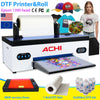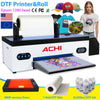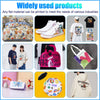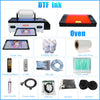What Printer Can I Use for UV DTF Printing? The ACHI A3 UV DTF Printer Explained
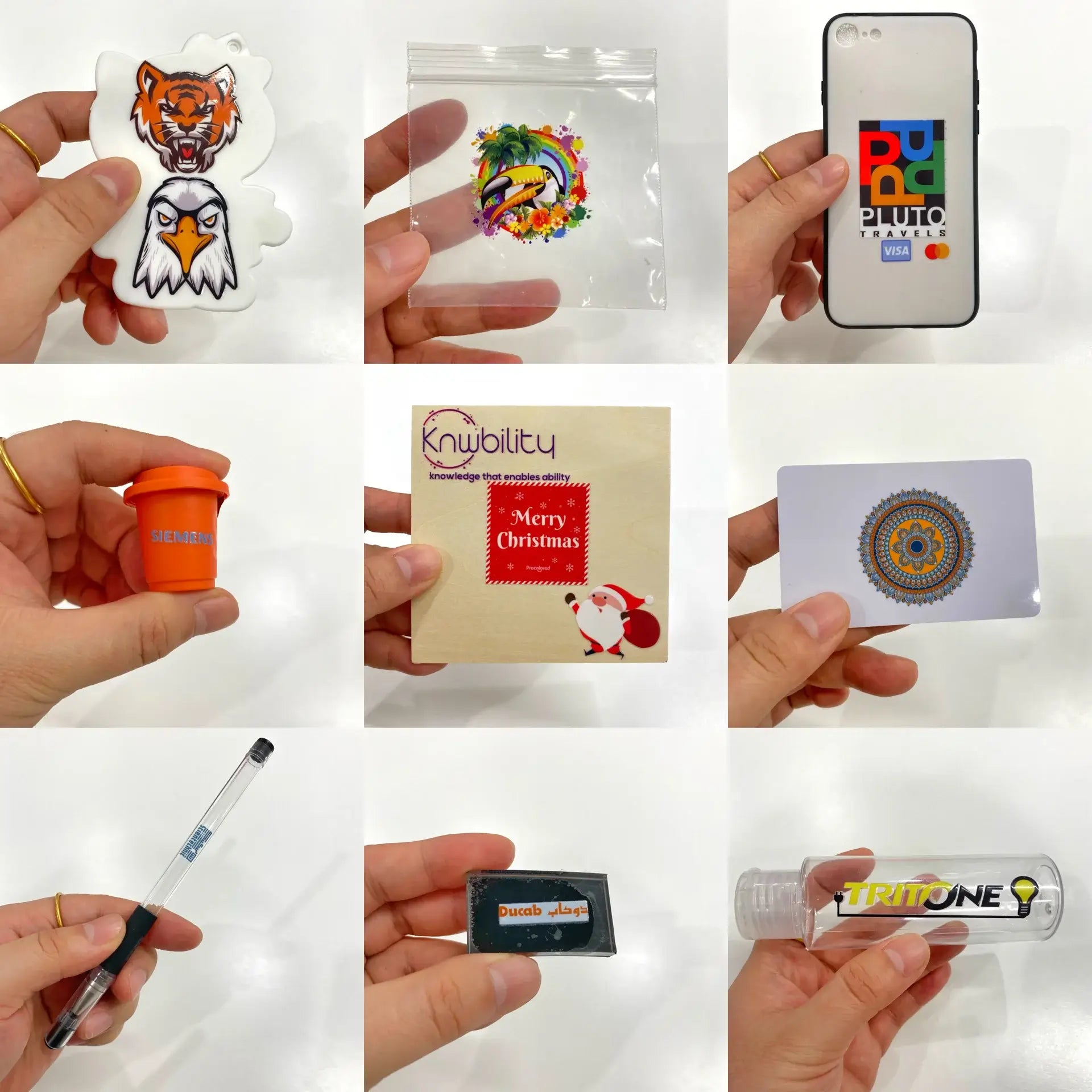
For designers, small business owners, and creative entrepreneurs, UV DTF (Direct-to-Film) printing has emerged as a game-changing technology.
Unlike traditional printing methods, UV DTF lets you create vibrant, durable “UV DTF Sticker” that transfer seamlessly onto almost any surface—from curved mugs and phone cases to wood, glass, and metal.
But with so many printers on the market, how do you choose the right one?
Enter the ACHI A3 UV DTF Printer—a compact, high-performance solution tailored for professional-grade results.
Here’s why it stands out.
⚙️ ACHI A3 UV DTF vs. Traditional DTF: Why the Technology Matters
First, let’s clarify what sets UV DTF apart from standard DTF printing:
-
Traditional DTF: Used primarily for textiles (e.g., T-shirts, hoodies). It involves printing on PET film, shaking powder over the design, oven-drying, and heat-pressing onto fabric. This process is messy, requires multiple machines, and only works on soft materials.
-
UV DTF: Uses UV-curable inks printed onto a special “A film.” A “B film” is then laminated onto it, creating a transferable “UV DTF sticker.” No powder, ovens, or heat presses are needed. The labels adhere to hard, curved, or textured surfaces—think tumblers, signage, or promotional items.
The ACHI leverages UV DTF’s simplicity, merging printing and laminating into one automated process.
✨ Key Features of the ACHI A3 UV DTF Printer

Though specifications vary slightly across similar A3 models, the ACHI A3 aligns with industry-leading capabilities:
-
Print Quality & Speed:
-
High Resolution: 6PASS/8PASS/12PASS/16PASS, Different optionfor razor-sharp details, gradients, and 3D textures.
-
Rapid Production: 6PASS/ 3㎡/H; 8PASS/2㎡/H 12PASS/1.5㎡/H, with instant UV curing—no drying delays.
-
-
Ink System:
-
Uses 6-color UV inks (CMYK + White + Varnish) for exceptional color depth, opacity on dark surfaces, and glossy/matte finishes.
-
Eco-friendly, low-odor, and resistant to scratches, water, and fading.
-
-
User-Friendly Design:
-
Vacuum Table: Secures films and rigid substrates during printing.
-
Plug-and-Play Software: 2025 new model is able to print PNG image direclty .
-
🏆 Why Choose the ACHI A3 Over Competitors?
-
Cost-Effectiveness: At ~$3,800–$4,100 (similar to industry benchmarks), it’s ideal for startups avoiding six-figure industrial printers19.
-
Compact Footprint: Fits in small workshops (78×43×38 cm), unlike bulkier UV flatbeds.
-
All-in-One Function: No separate laminator needed—saving space, time, and costs.
🧪 Real-World Applications
The ACHI A3 excels where other printers fail:
-
Hard-Surface Goods: Custom phone cases, mugs, tiles, or metal signs.
-
Promotional Items: Branded pens, USB drives, and keychains.
-
Boutique Products: Limited-edition cosmetics packaging or artisanal décor
💡 Case Study: Coffee shops use A3 UV DTF printers to create custom coasters in-house, boosting margins by 60% on small-batch orders.
⚠️ Practical Considerations
-
Material Limitations: Avoid uneven surfaces (e.g., textured stone) for optimal adhesion.
-
Upkeep: It need daily maintenance to prevent clogs.
- Installation: Some customer think very difficult to install the film .
💬 Frequently Asked Questions
Q: Can the ACHI A3 print on fabric?
A: No—use traditional DTF for textiles. UV DTF excels on rigid/curved substrates like glass, plastic, or metal47.
Q: How durable are UV DTF prints?
A: They’re waterproof, scratch-resistant, and UV-stable, lasting years on items like outdoor signage or drinkware36.
Q: What’s the learning curve?
A: Most users master the software and workflow within days. Technical support is typically included19.
Q: Where can I buy UV DTF films/inks?
A: achiuvdtfprinter.com offer compatible films (A/B layers) and UV inks.
Ready to dive into UV DTF? The ACHI A3 isn’t just a printer—it’s a doorway to high-margin, creative customization.
